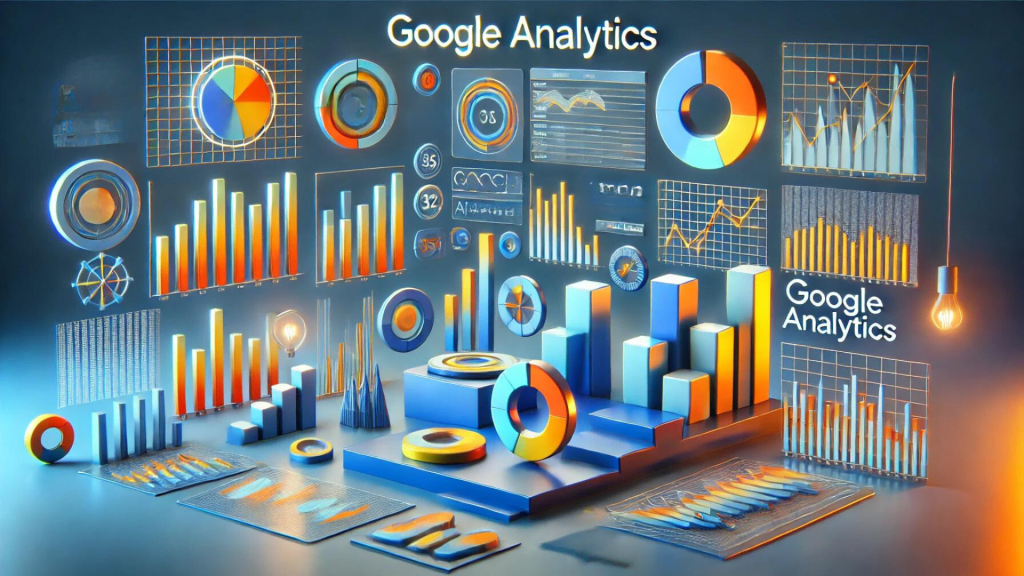Effective Techniques For Measuring ROI In Digital Marketing
Reading time: 8 minutes
Table of Contents
- The Importance of Setting Clear Goals and KPIs
- Leveraging Digital Analytics Tools for Campaign Insights
- Benefits of Digital Analytics Tools:
- Tracking Conversions and Aligning with Goals
- Methods for Tracking Conversions:
- Cost Per Acquisition (CPA) and Customer Lifetime Value (CLV)
- Why CPA and CLV Matter:
- The Power of A/B Testing in ROI Measurement
- How Social Media Has Impacted Marketing for Small Businesses
- Key Social Media Impact Areas:
- The Role of a Marketing Data Analyst in ROI Measurement
- Final Thoughts: Optimizing ROI with Strategic Measurement
In today’s fast-paced digital landscape, measuring the return on investment (ROI) in digital marketing is essential for understanding the effectiveness of your campaigns and optimizing your marketing spend. For small businesses, knowing effective techniques for measuring ROI and how to assess these outcomes is even more critical, as it enables better decision-making and resource allocation
In this article, we’ll explore effective techniques for measuring ROI and how leveraging marketing analytics agencies, digital analytics tools, and more can lead to improved business outcomes. We’ll also delve into the benefits of digital marketing for small businesses, highlight content marketing analytics, and explain how social media has impacted marketing for small businesses.

The Importance of Setting Clear Goals and KPIs
Before diving into specific tactics to measure ROI, the first step is defining success. Whether your goal is increasing website traffic, generating leads, or boosting sales, setting clear objectives ensures that you have a benchmark for success. Key performance indicators (KPIs) provide measurable outcomes that align with these objectives.
For example, small businesses might focus on goals like:
- Increasing leads from content marketing efforts.
- Tracking social media engagement to enhance influencer marketing KPIs.
- Enhancing SEO rankings through tools like SE Ranking to improve online visibility.
Working with a marketing analytics agency can help establish clear KPIs tailored to your business needs, ensuring all marketing efforts contribute toward measurable success.

Leveraging Digital Analytics Tools for Campaign Insights
One of the most effective ways to measure digital marketing ROI is by using digital analytics tools. Platforms like Google Analytics, SEMRush, and SE Ranking allow businesses to track website performance, analyze user behavior, and measure conversion rates.
Benefits of Digital Analytics Tools:
- Real-time data tracking – Immediate insights into campaign performance.
- Website user behavior – Analyze how visitors engage with your content, what pages they view, and how long they stay.
- Traffic sources – Identify where your traffic is coming from, such as social media, organic search, or paid ads.
- Conversion optimization – Pinpoint areas in your marketing funnel that need improvement to increase conversions.
By regularly using digital analytics tools, businesses can optimize their marketing strategies and focus resources on high-performing campaigns. This process becomes even more effective when supported by the right content creation tools and tips for effective digital marketing, which ensure the content you analyze is built for performance.

Tracking Conversions and Aligning with Goals
To truly measure the ROI of your digital marketing, you need to implement conversion tracking. Conversions align directly with your goals and can be anything from a sale, a form submission, or a content download. Tracking these conversions helps you understand how your marketing initiatives contribute to revenue generation.
Methods for Tracking Conversions:
- Google Tag Manager – Set up conversion tags on key actions such as clicks, downloads, or form submissions.
- Pixel tracking – Use pixels in paid campaigns (such as Facebook ads) to monitor how users behave after interacting with your ads.
- SE Ranking – Track SEO-related conversions by monitoring your keyword rankings and understanding their correlation with lead generation.
Conversion tracking not only informs your content marketing analytics but also highlights the direct financial impact of your marketing efforts. As you track performance, it’s equally important to enhance cybersecurity in digital marketing campaigns to safeguard user data and maintain trust across channels.
Cost Per Acquisition (CPA) and Customer Lifetime Value (CLV)
Measuring the financial success of your campaigns involves looking at two critical metrics: Cost Per Acquisition (CPA) and Customer Lifetime Value (CLV). CPA shows how much you’re spending to acquire each customer, while CLV helps you understand the long-term value of a customer to your business.
Why CPA and CLV Matter:
- CPA – This metric allows businesses to gauge whether their marketing campaigns are cost-effective. By dividing total campaign costs by the number of conversions, you get a clear view of how much you’re paying for each new customer.
- CLV – By understanding how much revenue a customer generates over their relationship with your business, you can decide how much to invest in acquiring new customers and retaining existing ones.
For small businesses, this combination of metrics is vital to ensuring the sustainability of their marketing spend. A marketing data analyst can offer deeper insights into both CPA and CLV, ensuring that your investments are yielding long-term benefits.
The Power of A/B Testing in ROI Measurement
A/B testing is a tried-and-true method for improving marketing results. This involves testing different versions of a campaign (e.g., varying headlines, calls-to-action, or images) to see which performs better. This iterative approach helps you refine your marketing strategies based on real-time performance data, which can significantly boost your ROI over time.
When running an A/B test, always measure specific KPIs like conversion rates, click-through rates, or sales performance. Using SE Ranking and other SEO tools during A/B tests can offer valuable insights into the effectiveness of different approaches for improving organic traffic.
Additionally, small businesses benefit by conducting these tests across various platforms, including email, social media, and landing pages. Consistent optimization through A/B testing ensures that businesses aren’t spending on underperforming campaigns, which is key to maximizing ROI.
Insert Image Suggestion: Side-by-side comparisons of two landing pages or advertisements with differing headlines or images.
How Social Media Has Impacted Marketing for Small Businesses
Social media has revolutionized how small businesses reach and engage their target audiences. For many, platforms like Instagram, Facebook, and TikTok offer cost-effective ways to grow brand awareness, generate leads, and increase sales. Small businesses can leverage influencer marketing KPIs to gauge the success of collaborations with social media influencers.
Key Social Media Impact Areas:
- Audience Reach – Small businesses can reach a larger, more targeted audience through paid social media ads or organic posts.
- Real-time engagement – Social platforms allow businesses to interact with their audience in real-time, fostering stronger customer relationships.
- Measurable results – Social media platforms provide in-depth analytics that can be used to track the success of posts, stories, and ads.
Many small businesses have seen positive outcomes from incorporating social media into their marketing strategies, particularly when combined with digital analytics tools. By utilizing platforms such as SE Ranking, businesses can track social media-driven traffic, conversions, and other key metrics.

The Role of a Marketing Data Analyst in ROI Measurement
The role of a marketing data analyst is crucial in helping businesses interpret their data, ensuring that marketing efforts are both effective and efficient. A data analyst provides actionable insights into key performance metrics, helping businesses adjust their campaigns in real-time to optimize results.
Working alongside a marketing analytics agency, a data analyst can:
- Measure the success of content marketing strategies using advanced tools.
- Track content marketing analytics to refine blog posts, videos, and social media efforts.
- Analyze influencer marketing KPIs to determine the effectiveness of influencer partnerships.
Hiring a marketing data analyst ensures that businesses fully understand how their marketing campaigns impact ROI and make informed decisions moving forward.

Final Thoughts: Optimizing ROI with Strategic Measurement
Measuring ROI in digital marketing goes beyond just looking at sales figures. It involves analyzing various KPIs, using digital analytics tools, tracking conversions, and refining your strategies through A/B testing. For small businesses, the benefits of digital marketing include a better understanding of customer behavior, optimizing marketing spend, and improving the overall customer experience.
By utilizing the right tools and partnering with experts like marketing analytics agencies, businesses can consistently track and improve their marketing efforts, ensuring long-term success and growth. The insights provided by a marketing data analyst further amplify the ability to drive higher ROI.
Lastly, leveraging platforms like SE Ranking enables businesses to gain competitive insights and improve their online presence, ultimately boosting the effectiveness of their digital marketing campaigns. Explore the cutting-edge digital marketing solutions offered by Owltek Solutions and discover how they can help your business thrive in the digital landscape!

**This post contains affiliate links, meaning I may earn a small commission if you make a purchase through one of them. Rest assured, I only recommend products I truly love. Your support helps keep my creative business thriving — thank you!**
